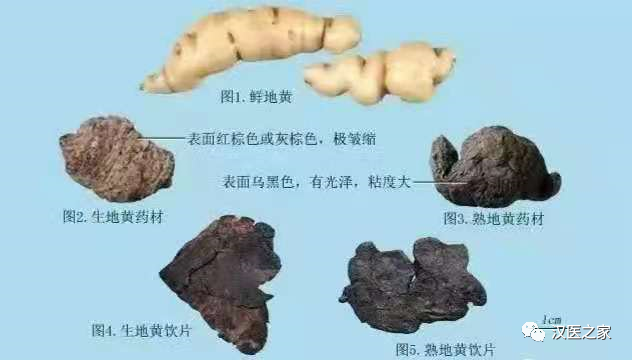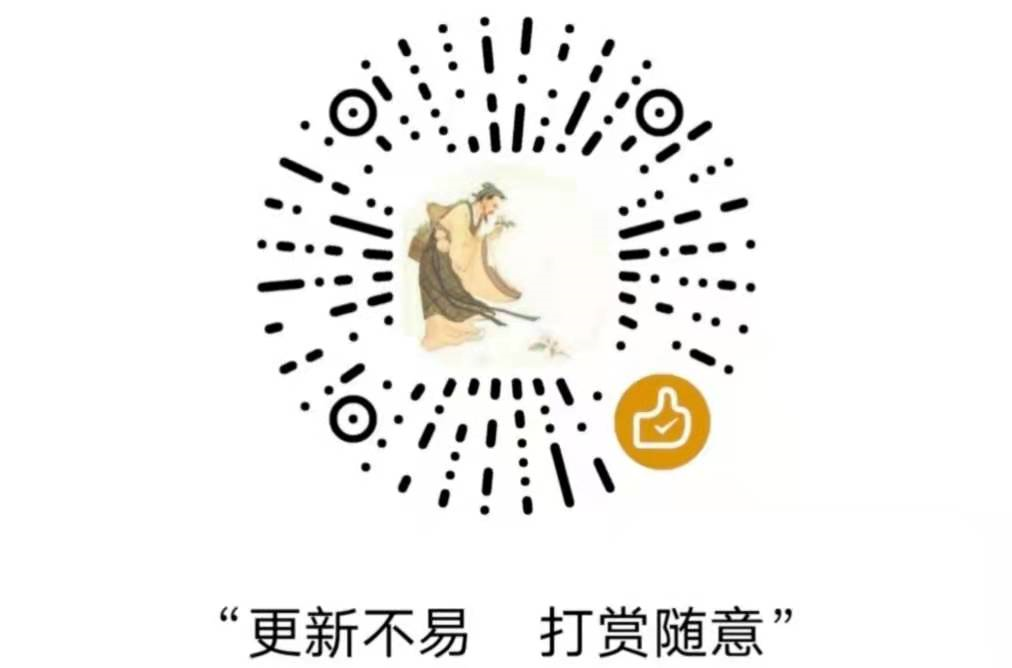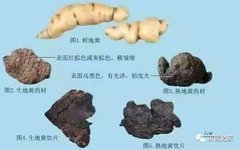
1. Summary of Classical Texts
“Pearl Bag”: “Greatly tonifies blood deficiency, unblocks blood vessels, and benefits energy and strength.“
“Compendium of Materia Medica”: “Fills the bone marrow, promotes muscle growth, generates essence and blood, nourishes the five internal organs, unblocks blood vessels, benefits the ears and eyes, darkens hair, treats the five labors and seven injuries in men, and women’s postpartum issues, irregular menstruation, and various diseases during pregnancy and childbirth.”
“New Materia Medica”: “Nourishes kidney water, fills the bone marrow, unblocks blood vessels, nourishes true yin, sharpens hearing and vision, darkens hair and beard.”
“Four Hundred Flavors of Medicinal Properties”: “Rehmannia is slightly warm, nourishes the kidney and tonifies blood. Benefits the marrow and fills essence, darkens hair and beard.”
“Materia Medica of Benefits and Harms”: “[Harm] Rehmannia is a medicine that causes stagnation of yin, not suitable for diseases of the spleen and stomach. For those with phlegm in the chest and diaphragm, obstructed qi pathways, and stagnation of ascending and descending, this medicine should be avoided. For those with weak stomach qi, excessive use of Rehmannia will lead to bloating and reduced appetite, how can the disease be cured?”; [Benefit] Sweet and slightly warm, tonifies the spleen, liver, and kidney, nourishes blood and nourishes yin, is the main medicine for strengthening water.”
“Essentials of Materia Medica”: “Nourishes kidney water, tonifies true yin, fills the bone marrow, generates essence and blood, sharpens hearing and vision (the ears are the orifice of the kidneys, the eyes are the orifice of the liver. The eyes can see with blood, and the ears can hear with blood), darkens hair and beard. Treats labor injuries, wind dampness, and various diseases during pregnancy and childbirth, is the top medicine for tonifying blood.”
“Feng’s Secret Record”: “Greatly tonifies blood deficiency, doubles the nourishment of kidney water, fills the bone marrow suitable for true yin, specifically tonifies the original qi of the kidney, also treats the meridians of stored blood, injuries from falls and strains, the five labors and seven injuries, blood stasis, internal injuries of the five organs, replenishes broken veins, unblocks blood vessels, benefits energy and strength, sharpens hearing and vision, darkens hair and beard, reduces deficiency heat and moistens dryness, tonifies essence and blood and regulates menstruation. After a febrile disease, especially effective for pain in the shins and abdomen after childbirth. In cases of turbidity, it strengthens the bone marrow, and diseases of internal injury affect the liver, tendons, kidneys, and bones. Rehmannia specifically nourishes the liver and kidneys, and is essential for internal injuries to tendons, bones, and marrow.”
“Li Zhongzi’s Explanation of Medicinal Properties”: “Taste is sweet and bitter, nature is warm, non-toxic, enters the heart, liver, and kidney meridians. Activates blood and qi, fills the bone marrow, nourishes kidney water, and tonifies true yin. After febrile disease, pain in the shins and thighs, and difficulty in the abdomen after childbirth. Benefits hearing and vision, darkens hair and beard, treats the five labors and seven injuries, can calm the soul and spirit.”
“Rehmannia is a blood tonifying agent, and the heart and liver store and generate blood, hence it can enter these organs. Its color is black, its nature is heavy and turbid, and it must benefit the menstruation, and labor injuries and palpitations can also be cured.“
“New Compilation of Materia Medica”: “Rehmannia, sweet in taste, warm in nature, heavy, yin among yang, non-toxic. Enters the liver and kidney meridians. Generates blood and benefits essence, promotes the marrow in the bones and brain. True yin energy cannot be generated without this, and the flames of deficiency fire cannot be reduced without this. Truly a life-saving divine product, a wonderful flavor for prolonging life.”
“People discard it due to its greasy stagnation, not knowing its efficacy. The kidney must be tonified without being drained, thus it must be tonified. However, there are few bitter tonics for the kidney. Outside of Shan Zhu Yu (Cornus), Niu Xi (Achyranthes), Du Zhong (Eucommia), and Bei Wu Wei (Schisandra), what other medicine can replace Rehmannia? Moreover, Shan Zhu Yu and Niu Xi cannot be used as the monarch, while Du Zhong is too warm in nature, can tonify the decline of kidney fire, but cannot replenish the deficiency of kidney water. Therefore, Rehmannia is essential. Rehmannia is the monarch medicine, which can be used from one tael to eight taels. The use of yin tonics and yang tonics is indeed different. Yang tonics can be used in small amounts to be effective, while yin tonics must be used in larger amounts to achieve results. Yang rises and yin descends. When yang rises, using a small amount of yang medicine can easily cause qi to rise. When yin descends, using a small amount of yin medicine makes it difficult for the flavor to descend. Rehmannia is a supreme yin medicine, especially different from other yin medicines, and without using it in large amounts, how can one achieve victory? Some say that Rehmannia, being a supreme yin medicine, is very stagnant, and using it in large amounts can cause greasy stagnation and phlegm, which may lead to cough, and this is indeed dangerous. This is precisely not understanding the power of Rehmannia. Since Shennong tasted herbs, this flavor has been lost in discussion, leading later generations to be unaware of its reasons. Although many famous doctors throughout history have made discoveries, they have never mentioned its secrets.”
2. Modern Research
Pharmacological Effects of Rehmannia
Research comparing the effects of cooked Rehmannia and raw Rehmannia on vascular thrombosis syndrome shows that the coarse cooked Rehmannia produced in China can strongly inhibit hepatic hemorrhagic necrosis and simple necrosis.
Cooked Rehmannia has a weaker anticoagulant effect, and using the fibrin plate method, the activation of the fibrinolytic system was explored, finding that cooked Rehmannia has an activating effect, while raw Rehmannia does not have this effect.
It has also been reported that both raw and cooked Rehmannia have hemostatic effects, and the hemostatic effect of cooked Rehmannia has not been enhanced after carbonization.
Analysis of the hemostatic effects of decoctions of raw Rehmannia, cooked Rehmannia, raw Rehmannia carbon, and cooked Rehmannia carbon showed no significant differences.
Experiments have found
That the decoction of Huaiqing cooked Rehmannia can alleviate weight loss in hyperthyroid type yin-deficient rats, significantly reducing 24-hour water intake and urine output, and significantly improving plasma T3 and T4 concentration levels (i.e., T3 decreased, T4 increased) and AD (plasma aldosterone) levels significantly increased.
This proves that it indeed has a strong yin-nourishing effect. It is preliminarily believed that the yin-nourishing and kidney-tonifying effects of cooked Rehmannia are related to the improvement of AD levels in the body.
Decoction of cooked Rehmannia given to mice can significantly increase the activity of glutathione peroxidase (GSH-Px) in animal serum and reduce the content of lipid peroxides in serum.
It can increase the activity of superoxide dismutase (SOD) in the blood to a certain extent, but without statistical significance. There is no effect on the activity of catalase in the blood.
Cooked Rehmannia has a certain effect on the protein metabolism of some organs in rats.
Oral administration of cooked Rehmannia has an inhibitory effect on the mitosis of epithelial cells.
Experiments show
That Liu Wei Di Huang Tang (Six Flavor Rehmannia Decoction) with cooked Rehmannia as the main ingredient can not only increase the weight of normal mice, prolong swimming time, and enhance physical strength, but also reduce the incidence of gastric squamous cancer induced by N-nitroso-N-methylurea in mice, and make the germinal centers of spleen lymph nodes in animals receiving chemical carcinogens more active.
In the early stages of transplanted tumors, it can enhance the phagocytic activity of the mononuclear macrophage system, increase the ratio of albumin to globulin in the blood of tumor-bearing animals, and seems to prolong the survival time of tumor-bearing animals.
1. The effect of cooked Rehmannia on delaying aging in mice
Cooked Rehmannia 20% decoction was administered daily at 0.3ml for 45 days, and blood was taken for measurement of superoxide dismutase (SOD), catalase (CAT), glutathione peroxidase (GSH-Px) activity, and lipid peroxides (LPO) content.
The results showed that cooked Rehmannia can enhance GSH-Px activity and reduce the content of LPO in serum, with P values of <0.05 and <0.01 compared to the control group.
2. Effects on hyperthyroid type yin-deficient rats
Using triiodothyronine (T3) to induce a yin-deficient model in rats and administering cooked Rehmannia decoction at 3ml (70% concentration) for 6 days, then measuring various data.
The results showed no significant differences in signs, weight changes, 24-hour water intake and urine output, and plasma concentrations of hormones: T3, thyroxine (T4), and aldosterone (AD) before and after treatment compared to the normal control group (P>0.05).
However, after modeling, the yin-deficient group showed very significant changes compared to the normal group, such as increased excitement and aggression, weight loss, increased 24-hour water intake and urine output, elevated T3 concentration, and decreased T4 and AD concentrations.
After administration of cooked Rehmannia to the yin-deficient rats, the above symptoms and various indicators significantly improved, approaching normal (compared to the yin-deficient group).
For example, the plasma AD concentration in the cooked Rehmannia group was significantly elevated (P<0.05), and the 24-hour urine output was significantly reduced (P<0.01), suggesting that cooked Rehmannia has a kidney-yin nourishing effect related to the improvement of AD levels in the body.
The plasma concentrations of T3 and T4 in the yin-deficient treatment group improved significantly (T3 concentration decreased, T4 concentration increased) and approached normal levels.
This indicates that cooked Rehmannia can not only improve yin-deficiency symptoms through systemic regulation but also regulate abnormal thyroid hormone states.
Additionally, compared to the normal group, the treatment group for yin deficiency still showed significant differences in weight changes, 24-hour water intake, plasma T3 and T4 concentrations, indicating that while the treatment group showed significant improvement and approached normal levels compared to the yin-deficient group, it did not fully return to normal. This suggests that the effects of cooked Rehmannia still have limitations.
3. Experimental observation of the blood tonifying effect of cooked Rehmannia
Raw and cooked Huai Rehmannia were prepared into a 1:1 decoction and administered to mice to observe the effects on hemorrhagic anemia, hematopoietic stem cells, and bone marrow erythroid progenitor cells CFU-E generation.
The results showed that raw and cooked Huai Rehmannia had significant effects on hemorrhagic mice, with the cooked Rehmannia group recovering faster after 8 days of treatment, having basically recovered, with RBC and Hb counts showing P values of 0.001 and 0.01 compared to the control group.
Raw and cooked Rehmannia also had a certain proliferative and differentiative effect on hematopoietic stem cells, suggesting that the blood tonifying effect of Rehmannia is related to the promotion of blood cell production from hematopoietic stem cells.
For the generation of erythroid progenitor cells in the bone marrow of mice: the physiological saline group had erythroid colonies (number) of 52.4±18.41, while the raw and cooked groups had 60.2±19.44 and 125±20.45 respectively (P<0.05). This suggests that the blood tonifying effect of Rehmannia is closely related to the bone marrow hematopoietic system.
4. The effect of carbonized Rehmannia on hemostatic effects
Raw Rehmannia, carbonized raw Rehmannia, cooked Rehmannia, and carbonized cooked Rehmannia were prepared into decoctions containing 100g of raw medicine or 33g of carbonized medicine per 100ml.
Each sample was administered at a dose of 0.8ml/20g to mice, and blood was taken from the left eye inner canthus and retro-orbital venous plexus to measure coagulation time and compare with the physiological saline group.
The results showed no significant differences (P>0.05), suggesting that Rehmannia does not require processing for hemostatic effects.

Note: The various prescriptions and formulas mentioned in this article are for reference and study by professional TCM practitioners only, and should not be used as prescriptions. Please do not use medications blindly, and seek medical attention promptly if any discomfort occurs.
Copyright Statement: This article is reproduced from the internet. If there is any infringement, please contact for deletion!
For submissions and reprints, please contact QQ/WeChat: 1612237026
THE END


